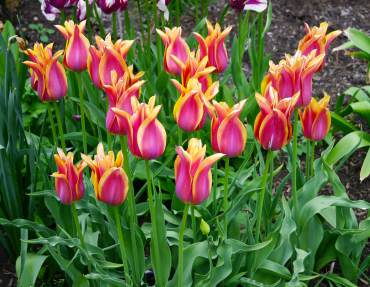
No project ever seems to be without a glitch, and for me fall bulb-planting season is filled with a series of glitches and hurdles in a race against time. Yet at the end of summer, I am ready to face the season of the falling leaves with plenty of garden projects.
I can’t wait to tackle the stacks of garden catalogs cluttering my office. Thumbing through every page, looking at the glossy images and reading their descriptions, I know expert word wranglers write these catalogs. They spin creative plant characterizations that urge me to buy, buy and buy. I feel like a child in a toy store, as bright-red, striped tulips jump out from the page.
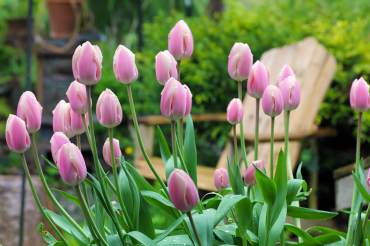
I mark and tag each catalog filled with giant alliums, tulips, daffodils, crocus, lilies and every little specialty bulb, tuber, corm or rhizome. After I write down my selections, the grand total reaches proportions rivaling Santa’s toy list. I look at the items again, moving many entries over to the wishful-thinking column, until the amount of plants left align with my garden budget.
With a month or more to prepare a space in the garden for my new purchases, I’m confident I will complete the groundwork before the bulbs arrive at my front door. The list has been whittled down to a manageable amount of plants and I am positive there is room in the garden, after I make a few adjustments, and time to plant every one. I send off the orders.
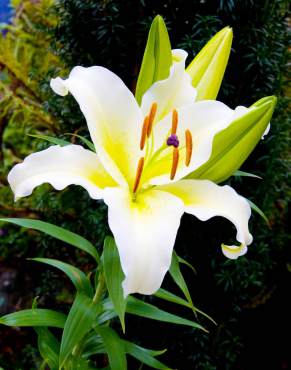
The first box arrives, announced by the doorbell ring. I eagerly open the box and spill bags of bulbs, envelopes and planting directions across the kitchen counter, showering flecks of soil and packing material across the newly mopped floor. Boxes always seem to arrive after a thorough house cleaning. For now, I’m going to dance around the kitchen, holding bags of bulbs in each hand, anticipating the production of digging them into the soil, for next spring’s floral show.
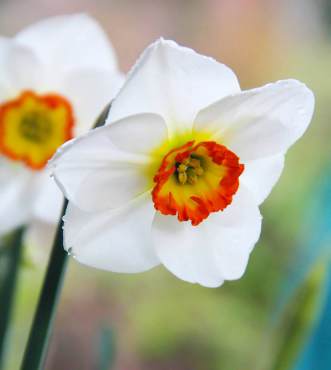
Finally, the rest of the boxes arrive. I’ve checked them off my list, saved all the receipts, put each bulb’s name into my database. Sounds organized? Hardly. I haven’t planted anything yet.
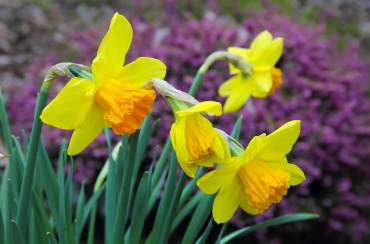
I grab the bulb planter, shovel, fertilizer and the first bulbs to go into the ground, throwing everything into a 5-gallon bucket. It never seems to fail: I walk into the garden about the same time an autumn squall opens its floodgates, dumping a large quantity of huge raindrops, soaking me within seconds. I mutter, “Very funny!” I’m determined to continue my planting quest, in spite of nature spitting on the ground. I dash inside, slip on my hat, raincoat and muck boots. Quickly the small storm passes through and the sun peeks out. A rainbow in the distance tells me the squall is still kicking up a fuss somewhere else. Here I stand in the fresh-washed air, a bag of 100 lily-flowering tulips in one hand, a shovel in the other, wondering — where am I going to plant them?
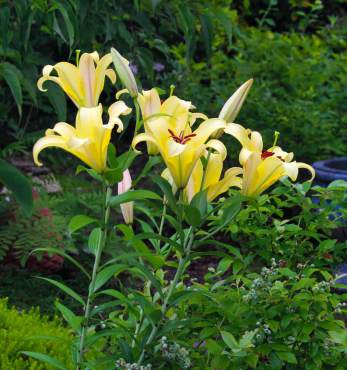
I set off to get the task done. Arriving in the garden, I notice some plants need dividing, the soil needs amending and there is precious little space for my bulbs. I cannot plant all my bulbs in one session; this gardener will be lucky to plant every bulb this fall.
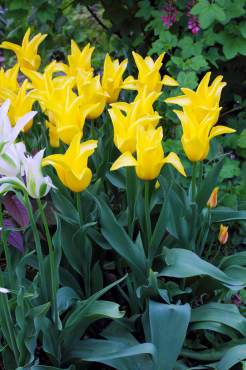
What was I thinking when I ordered hundreds of bulbs last summer? I wonder where the time went. I thought there was six weeks to prepare the garden for the incoming bulbs, but Procrastination, my lifelong friend, came to visit; the work was set aside.
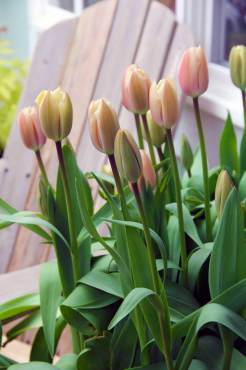
How many of us find ourselves facing the garden, trowel in one hand and bags of bulbs in another, without a clue where to plant them? It has happened so often to me that I’ve had to find ways to overcome being overwhelmed. Just the commitment of planting those precious bulbs is enough to make anyone feel they need to be committed for buying more than they could handle!
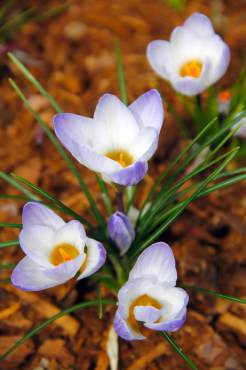
When facing the dilemma of too many bulbs and not enough time, you can give the excess away to other gardeners. It’s better to be generous with your friends than let the bulbs rot in their packages. Better yet if you can keep them and use all the bulbs in your garden. Whenever there are leftover bulbs, grab some black gallon pots, decorative pots or any pot you can find, and plenty of potting soil to bury your treasures in.
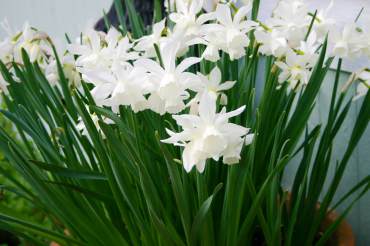
In the black gallon pots, pot up as many bulbs of daffodils or tulips as you can place in there side by side, without touching each other. For plants like lilies with large bulbs, plant only one to three bulbs per gallon pot. In addition, place bulbs in large or small decorative pots. Whichever way you choose, get them planted in the dirt and worry about replanting them or staging them later.
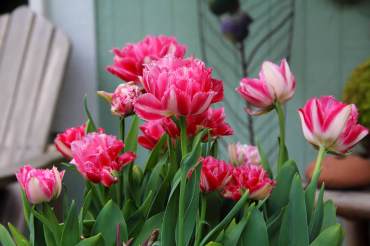
Keep on hand some nice decorative pots that will contain the black, plastic gallon-size pots or larger. I use these to toss a nice-looking plant in for an instant display that disguises the ugly plastic pots they come in. When the display is over, take the plastic pot out and replace it with another plant in bloom. This works well with perennials that bloom for a couple of weeks. When the show is over, you can plant the perennials out in the garden. It also works with bulbs.
The decorative pots allow you to stage an ever-changing plant show, with smaller pots surrounding some of the larger ones that have more permanently planted displays. This is one way to have an array of fresh plants on the deck all summer and a spring march of planted bulbs when they are in their spring glory.
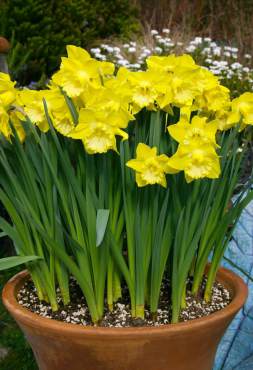
Anyone can do this, whether purposely or like me, in a panic of what to do with excess bulbs. You can plant 1- to 3-gallon pots with one type of bulb. Five or six daffodils or tulips, more or less depending on bulb size for a 1-gallon pot, and use more bulbs for the larger containers. Lilies will look great when all are blooming at the same time. While the plants are developing over winter, keep the potted ones in a protected place (especially if you have squirrel problems), buried in the ground, under leaves or an unheated cloche, or in a greenhouse. When they are ready for staging, clean the dirt off the pot and place them inside the decorative pots.
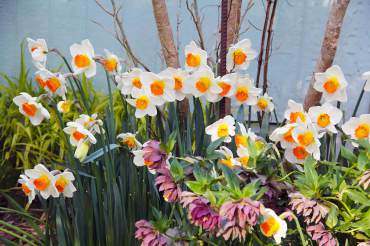
Alternatively, you can plant your bulb-filled plastic pots in the ground. This is useful if you don’t want to view the unsightly ripening foliage of tulips and daffodils taking up garden space. Plant the bulbs in their pots and the pots in the ground any time between fall and before the plants blossom. When the flower show is over in the spring, take the pots out of the ground and place them in a hidden place where you can allow the foliage to continue basking in the sun until they die back to the ground. Or toss the bulbs completely and stage a new show next year.





























